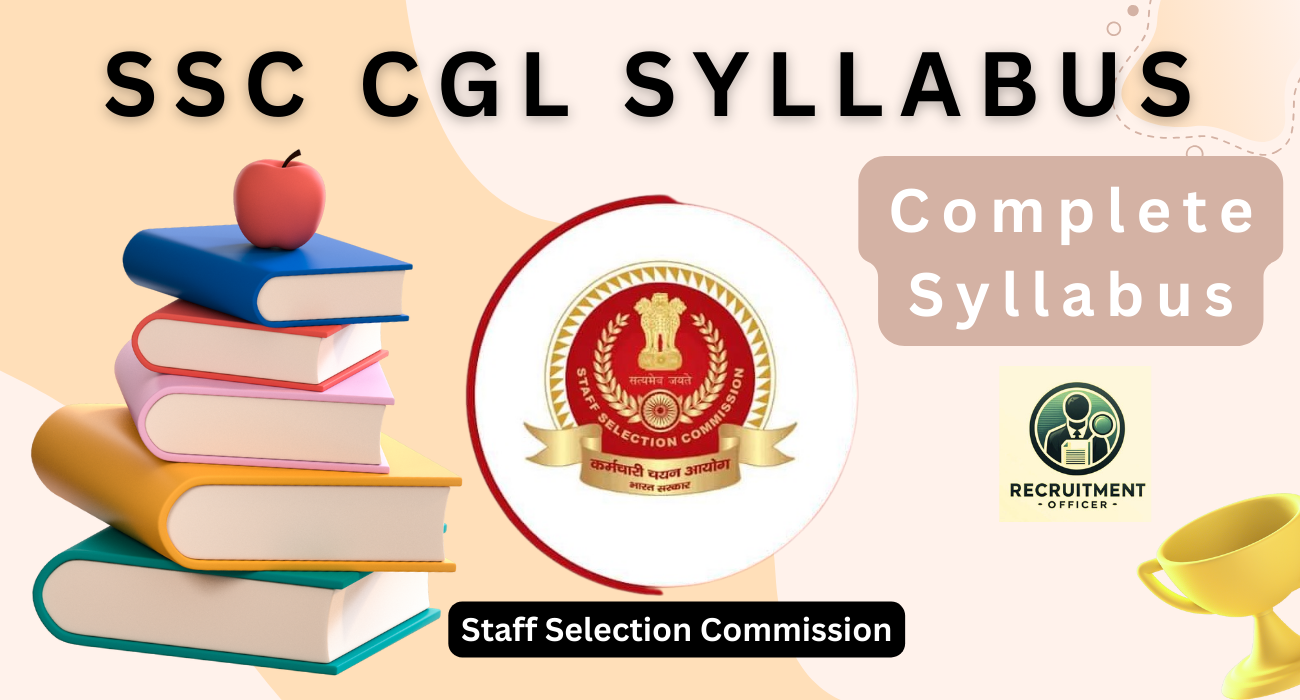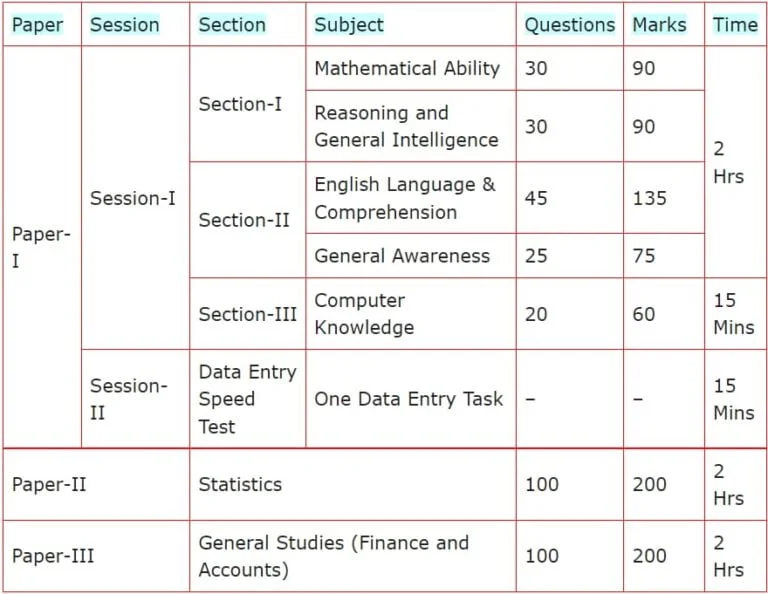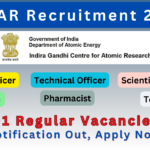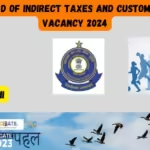SSC CGL 2024: With the release of the SSC CGL 2024 Notification, the Staff Selection Commission (SSC) has introduced changes to the exam pattern and syllabus for the Combined Graduate Level (CGL) Examination. The SSC CGL exam is now structured into two tiers, with each tier playing a crucial role depending on the post requirements. Detailed information about the updated SSC CGL syllabus and exam pattern is provided below.

SSC CGL 2024 Overview
| Organization | Staff Selection Commission (SSC) |
|---|---|
| Post Name | Multiple Graduate Level Posts |
| Advertisement No. | SSC CGL Examination 2024 |
| Job Location | All India |
| Category | SSC CGL Notification 2024 |
| Official Website | ssc.gov.in |
Important Dates for SSC CGL 2024
| Event | Date |
|---|---|
| Notification Release Date | June 24, 2024 |
| Application Start Date | June 24, 2024 |
| Last Date to Apply | July 24, 2024 |
| Tier-I Exam Date | September-October 2024 |
Application Fees for SSC CGL 2024
| Category | Fee |
|---|---|
| General/OBC/EWS | ₹ 100/- |
| SC/ST/PwD | No fee |
| Payment Mode: Online | |
Eligibility & Qualification for SSC CGL 2024
| Post Name | Qualification |
|---|---|
| Assistant Audit Officer/ Assistant Accounts Officer | Graduate + CA/CS/MBA (Desirable) |
| Junior Statistical Officer (JSO) | Graduate with 60% Marks in Maths in 12th Class OR Graduate with Statistics |
| All Other Posts | Graduate in Any Stream |
SSC CGL 2024 Exam Pattern
Tier-I Exam Pattern
The Tier-I exam is a computer-based objective test comprising four sections with a total of 100 questions, each worth 2 marks. The exam duration is 60 minutes, with a penalty of 0.5 marks for each incorrect answer.
| Section | Questions | Marks |
|---|---|---|
| Quantitative Aptitude | 25 | 50 |
| English Comprehension | 25 | 50 |
| General Intelligence & Reasoning | 25 | 50 |
| General Awareness | 25 | 50 |
| Total | 100 | 200 |
Note: Candidates who are visually handicapped or have cerebral palsy will have 80 minutes to complete the exam.
Tier-II Exam Pattern

The Tier-II exam includes three papers conducted on different days or shifts. Paper-I is compulsory for all posts, Paper-II is for Junior Statistical Officer (JSO) positions, and Paper-III is for Assistant Audit Officer/Assistant Accounts Officer positions.
Paper-I will be held in two sessions on the same day, with Session-I covering Sections I and II, and Module-I of Section III, and Session-II covering Module-II of Section III. Negative marking will be 1 mark for each wrong answer in Sections I and II, and Module-I of Section III, and 0.5 marks for each wrong answer in Paper-II and Paper-III.
SSC CGL 2024 Syllabus: Tier-I Syllabus
General Intelligence and Reasoning
Topics include analogies, similarities and differences, space visualization, spatial orientation, problem-solving, analysis, judgment, decision-making, visual memory, discrimination, observation, relationship concepts, arithmetical reasoning, figural classification, arithmetic number series, non-verbal series, coding and decoding, statement conclusion, and syllogistic reasoning.
General Awareness
This section tests the candidate’s general awareness of the environment and its application to society, including knowledge of current events, India and its neighboring countries, history, culture, geography, economic scene, general polity, Indian Constitution, and scientific research.
Quantitative Aptitude
Topics include number systems, computation of whole numbers, decimals, fractions, and relationships between numbers, percentages, ratio and proportion, square roots, averages, interest, profit and loss, discount, partnership business, mixture and alligation, time and distance, time and work, basic algebraic identities, graphs of linear equations, triangles, circles, right prisms, right circular cones, right circular cylinders, spheres, hemispheres, rectangular parallelepipeds, regular right pyramids, trigonometric ratios, degree and radian measures, standard identities, complementary angles, heights and distances, histograms, frequency polygons, bar diagrams, and pie charts.
English Comprehension
This section includes topics like understanding correct English, basic comprehension, writing ability, vocabulary, grammar, sentence structure, synonyms, antonyms, error spotting, fill in the blanks, spelling, idioms and phrases, one-word substitutions, sentence improvement, active/passive voice, direct/indirect narration, sentence rearrangement, cloze passages, and comprehension passages.
Tier-II Syllabus
Module-I of Session-I of Paper-I (Mathematical Abilities)
- Number Systems: Computation of Whole Numbers, Decimals and Fractions, and Relationship between numbers.
- Fundamental arithmetical operations: Percentages, Ratio and Proportion, Square roots, Averages, Interest (Simple and Compound), Profit and Loss, Discount, Partnership Business, Mixture and Alligation, Time and distance, Time and work.
- Algebra: Basic algebraic identities of School Algebra and Elementary surds (simple problems) and Graphs of Linear Equations.
- Geometry: Familiarity with elementary geometric figures and facts: Triangle and its various kinds of centers, Congruence and similarity of triangles, Circle and its chords, tangents, angles subtended by chords of a circle, common tangents to two or more circles.
- Mensuration: Triangle, Quadrilaterals, Regular Polygons, Circle, Right Prism, Right Circular Cone, Right Circular Cylinder, Sphere, Hemispheres, Rectangular Parallelepiped, Regular Right Pyramid with triangular or square Base.
- Trigonometry: Trigonometry, Trigonometric ratios, Complementary angles, Height, and distances (simple problems only) Standard Identities like sin2theta + cos2theta=1, etc.
- Statistics and probability: Use of Tables and Graphs: Histogram, Frequency polygon, Bar-diagram, Pie-chart; Measures of central tendency: mean, median, mode, standard deviation; calculation of simple probabilities.
Module-II of Section-I of Paper-I (Reasoning and General Intelligence)
Questions of both verbal and non-verbal types. These will include questions on Semantic Analogy, Symbolic operations, Symbolic/ Number Analogy, Trends, Figural Analogy, Space Orientation, Semantic Classification, Venn Diagrams, Symbolic/ Number Classification, Drawing inferences, Figural Classification, Punched hole/ pattern-folding & unfolding, Semantic Series, Figural Patternfolding and completion, Number Series, Embedded figures, Figural Series, Critical Thinking, Problem Solving, Emotional Intelligence, Word Building, Social Intelligence, Coding and de-coding, Numerical operations, Other sub-topics, if any.
Module-I of Section-II of Paper-I (English Language And Comprehension)
Vocabulary, grammar, sentence structure, synonyms, antonyms, and their correct usage; Spot the Error, Fill in the Blanks, Synonyms/ Homonyms, Antonyms, Spellings/ Detecting misspelled words, Idioms & Phrases, One-word substitution, Improvement of Sentences, Active/ Passive Voice of Verbs, Conversion into Direct/ Indirect narration, Shuffling of Sentence parts, Shuffling of Sentences in a passage, Cloze Passage, Comprehension Passage. To test comprehension, three or more paragraphs will be given and questions based on those will be asked. At least one paragraph should be a simple one based on a book or a story and the other two paragraphs should be on current affairs, based on a report or an editorial.
Module-II of Section-II of Paper-I (General Awareness)
Questions are designed to test the candidates’ general awareness of the environment around them and its application to society. Questions are also designed to test knowledge of current events and such matters of everyday observation and experience in their scientific aspect as may be expected of an educated person. The test will also include questions relating to India and its neighboring countries, especially about History, Culture, Geography, Economic Scene, General policy, and scientific research.
Module-I of Section-III of Paper-I (Computer Proficiency)
- Computer Basics: Organization of a computer, Central Processing Unit (CPU), input/ output devices, computer memory, memory organization, back- up devices, PORTs, Windows Explorer. Keyboard shortcuts.
- Software: Windows Operating system including basics of Microsoft Office like MS word, MS Excel and PowerPoint, etc.
- Working with the Internet and e-mails: Web Browsing & Searching, Downloading & Uploading, Managing an E-mail Account, e-Banking.
- Basics of networking and cyber security: Networking devices and protocols, Network and information security threats (like hacking, virus, worms, Trojans, etc.), and preventive measures.
Paper-III (General Studies-Finance and Economics)
Part A: Finance and Accounts-(80 marks)
Fundamental principles and basic concepts of Accounting
- Financial Accounting: Nature and scope, Limitations of Financial Accounting, Basic concepts, and Conventions, Generally Accepted Accounting Principles.
- Basic concepts of accounting: Single and double entry, Books of original Entry, Bank Reconciliation, Journal, Ledgers, Trial Balance, Rectification of Errors, Manufacturing, Trading, Profit & loss Appropriation Accounts, Balance Sheet Distinction between Capital and Revenue Expenditure, Depreciation Accounting, Valuation of Inventories, Non-profit organizations Accounts, Receipts and Payments, and Income & Expenditure Accounts, Bills of Exchange, Self Balancing Ledgers.
Part B: Economics and Governance-(120 marks)
Comptroller & Auditor General of India -Constitutional provisions, Role, and responsibility.
Finance Commission-Role and functions.
- Basic Concept of Economics and introduction to Micro Economics: Definition, scope, and nature of Economics, Methods of economic study and Central problems of an economy and Production possibilities curve.
Theory of Demand and Supply: Meaning and determinants of demand, Law of demand and Elasticity of demand, Price, income and cross elasticity; Theory of consumer’s behaviourMarshallian approach and Indifference curve approach, Meaning and determinants of supply, Law of supply and Elasticity of Supply.
Theory of Production and cost: Meaning and Factors of production; Laws of production- Law of variable proportions and Laws of returns to scale.
Forms of Market and price determination in different markets: Various forms of markets-Perfect Competition, Monopoly, Monopolistic Competition, and Oligopoly and Price determination in these markets.
Indian Economy: Nature of the Indian Economy Role of different sectors role of Agriculture, Industry, and Services-their problems and growth;
- National Income of India-Concepts of national income, Different methods of measuring national income.
- Population-Its size, rate of growth, and its implication on economic growth.
- Poverty and unemployment- Absolute and relative poverty, types, causes, and incidence of unemployment.
- Infrastructure-Energy, Transportation, Communication.
Economic Reforms in India: Economic reforms since 1991; Liberalisation, Privatisation, Globalisation, and Disinvestment.
Money and Banking:
- Monetary/ Fiscal policy- Role and functions of Reserve Bank of India; functions of commercial Banks/RRB/Payment Banks.
- Budget and Fiscal deficits and Balance of payments.
- Fiscal Responsibility and Budget Management Act, 2003.
Role of Information Technology in Governance:
- Questions in Module-I of Section- I of Paper-I (Mathematical Abilities) will be of Matriculation Level, in Module-I of Section- II of Paper-I (English Language and Comprehension) of 10+2 Level, and in Paper-II and Paper-III of Graduation Level.


